Home> Company News> Experimental study on microwave vacuum drying of melon seeds
- AddressNo.4087 SHAHEXI ROAD, TIAOQIAO DISTRICT,JINAN,CHINA
- Factory AddressNo.4087 SHAHEXI ROAD, TIAOQIAO DISTRICT,JINAN,CHINA
- Worktime9:00-18:00
- Phone(Working Time)0531-85064681
- Phone(Nonworking Time)86-18660125156
- Fax0531-85064682
Experimental study on microwave vacuum drying of melon seeds
2018-10-20 11:26:07Abstract: In order to increase the added value of agricultural products, improve the drying quality and reduce the energy consumption of drying, microwave drying equipment was used to dry white melon seeds. The effects of microwave power, drying temperature and vacuum degree on the microwave vacuum drying characteristics of white melon seeds and the relationship between protein, fatty acid retention and unit power consumption were studied by single factor test and quadratic regression orthogonal test with three factors and three levels. The results showed that microwave power, drying temperature and vacuum had significant effects on protein, fatty acid retention and unit power consumption of dried white melon seeds.
Pumpkin seed is the seed of Pumpkin or Squash, a cucurbitaceous vegetable crop. It is a special nut. Melon seeds are rich in protein, fatty acids, vitamins, and have the dietary and medicinal value of expelling intestinal parasites and treating prostate diseases. The demand for melon seeds is increasing all over the world.
Farmers basically dry white melon seeds naturally, but the drying time is long, the quality is affected by the environment greatly, easy to appear yellowing, mildew and other phenomena, so that the quality of serious decline, resulting in waste of species, directly affecting the income of farmers; traditional hot air drying, freeze drying and far infrared radiation drying technology, although can It can greatly shorten the drying time of the species, but the quality of the species is very easy to be destroyed, the cost of investment is high, but also cause a great waste of energy, the drying and storage of melon seeds need to be solved urgently. The combination of microwave technology and vacuum technology with melon seed drying equipment is a new drying technology, that is, the drying of materials under vacuum conditions using microwave energy. It uses the microwave penetrating power to make the material heated both inside and outside, shorten the drying time, and at the same time make the moisture evaporate quickly at a lower temperature in a vacuum environment, so that the material can be quickly dried, but also can prevent oxidation reaction on the surface of the material.
Microwave vacuum drying technology is widely used in light industry, chemical industry, food industry, agriculture and agricultural products processing industry at home and abroad. In the early 1970s, microwave vacuum drying technology was used to dry grass, banana, pectin, shrimp, pepper, medicine and mushroom.
The results show that the microwave vacuum drying technology can maintain the color and quality of agricultural, industrial, forestry and fishery products, and save energy efficiently. In order to further explore the application of microwave vacuum drying technology in the dehydration and drying of agricultural appendages and maximize the added value of agricultural products, the experiment of microwave vacuum drying of melon seeds was carried out. The effects of microwave power, vacuum degree and drying temperature on the quality and energy consumption of dried white melon seeds were discussed. Influence.
The pumpkins used in the experiment were purchased from the farmer's wholesale market in Daqing District 9. The pumpkins were fresh, non-rotten and damaged, similar in shape and size, and of the same maturity. WHZ-5B microwave vacuum drying test equipment, DGG-9070B electrothermal constant temperature blast drying box, JD300-3 electronic balance, S400 near infrared product quality tester, HK-06A portable crusher. 1% copper sulfate solution, concentrated sulfuric acid solution, 40% sodium hydroxide solution, 2% boric acid solution, 0.05 mol/L hydrochloric acid solution, anhydrous ethanol, 90% ethanol solution, 0.05 mol/L potassium hydroxide solution and 1% phenolphthalein indicator.
The technological process: fresh pumpkin cleaning digging seed extraction pretreatment selection microwave vacuum drying. Operational Points: Choose mature pumpkins with the same shape and size, wash, peel, dig and pick up seeds, then pretreat them. The pretreatment process is to wipe the surface melon flesh gently with clean paper towel, and put it into the material tray to dry for 10 minutes. After the surface is slightly dried, the melon seeds with uniform size are selected and put into the microwave vacuum drying equipment for drying.
The initial moisture content, protein content and fatty acid content of the pretreated seeds were measured at 100 g. Under the condition of different microwave power, drying temperature and vacuum, melon seeds were dried to the national storage standard of dried fruits and vegetables (dry base moisture content 8%), the moisture content of the materials was measured regularly, the protein content, fatty acid content and power consumption of the final dried products were determined, and the protein storage rate of dried fruits and vegetables was calculated. (Y) 1, fatty acid retention rate (Y) and unit power consumption (2 Y) 3. The moisture content in the test is all expressed by dry basis moisture content. Each process was repeated 3 times and the average value was obtained. The moisture content of materials was determined by GB 5496-1985 standard. The water content of dry base is expressed by Qg, and the calculation formula is as follows: Qg = ms-mg mg * 100%. (1) In formula: Mg - dry product quality, g; MS - sample quality before drying, G. The protein content was determined by Kjeldahl method. Protein preservation rate Qf was calculated by the following formula: Qf = _ng_ns x 100%. (2) In formula: _ng - dry product protein mass fraction, mg / g; _ns - dry sample protein mass fraction, mg / g. The fatty acid content was determined by GB/T 15684 - 1995 method. The preservation rate of fatty acids Qp was calculated by the following formula: Qf = _fg_fs x 100%. (3) Formula: _fg - fatty acid content of dry products, mg / g; _fs - fatty acid content of dry samples, mg / g. Q per unit power consumption
The unit power consumption is expressed by Qe, and the calculation formula is as follows: Qe = P *t. (4) Formula: P - rated power of microwave vacuum drying test device, kW; T - drying time, H.
After pretreatment, the initial moisture content of the dry base was 72.3%, and the 100 g seeds were put into a drying chamber with a drying temperature of 60 C and a vacuum of 60 kPa. The selected microwave drying power was 6, 7, 8, 9, 10 W/g respectively. The drying rate of materials accelerated with the increase of microwave drying power. Under the premise of the same initial moisture content, the greater the microwave power, the shorter the drying time required for the material. When the microwave power is 6 W/g and the water content of the melon seeds is 8%, it takes 14 minutes to dry the seeds; when the microwave power is 10 W/g, it only takes 3 minutes to dry the seeds to the water content of 8%, but when the microwave power is more than 9 W/g, the materials absorb a large amount of microwave energy rapidly, which results in the evaporation rate of water on the surface of the materials is not as fast as the internal moisture content. The diffusion velocity makes the internal moisture far lower than the surface moisture, and reduces the absorption and utilization of microwave energy, which may lead to the phenomenon of gelatinization in the material. Therefore, from the drying characteristics of the graphics, the initial moisture content of dry base 72.3%, drying temperature 60 C melon seeds into a vacuum of 60 kPa drying chamber for drying, microwave power of 7 ~ 9 W / G is more appropriate. The melon seeds with 72.3% initial moisture content after 100 g pretreatment were placed in a drying chamber with microwave power of 8 W/g and vacuum of 60 kPa. The drying temperatures were 40, 50, 60, 70 and 80 degrees respectively. The effects of different drying temperatures on the drying characteristics of melon seeds were measured.
The drying rate of materials accelerated with the increase of microwave drying temperature. It takes only 4 minutes to dry the material to 8% moisture content at 80 C, but 17.5 minutes to dry to 8% moisture content at 40 C. Further analysis shows that under the same experimental conditions, the drying temperature is too high, the material is not only damaged internally, but also the surface is easy to yellowing; and the drying temperature is too low, but the drying time is too long. Therefore, the initial moisture content of the dry base is 72.3%, and the microwave power is 8 W / g. The melon seeds are dried in a drying chamber with a vacuum of 60 kPa. The drying temperature is 50 ~ 70 C. The melon seeds with 72.3% initial moisture content after 100 g pretreatment were placed in a drying chamber with microwave power of 8 W/g and drying temperature of 60 C. The vacuum was selected as 40, 50, 60, 70 and 80 kPa, respectively. The effects of vacuum in different drying chambers on the drying characteristics of melon seeds were measured. The drying rate of materials accelerated with the increase of vacuum in drying chamber. This is mainly due to the decrease of boiling point of liquid with the increase of vacuum. When the vacuum chamber is 40 kPa, the moisture content of melon seeds is reduced to 8%, and the drying time is 21 min. When the vacuum level increased to 80 kPa, the drying time was 5 min. Further analysis shows that the vacuum degree of drying chamber has a great influence on the drying rate. The higher the vacuum degree is, the faster the drying rate increases at the initial stage of drying, the greater the drying rate at constant drying speed, and the shorter the drying time is needed. However, the higher the vacuum degree, the higher the energy consumption required for vacuuming and the higher the drying cost. Therefore, according to the drying characteristics, the seeds with initial moisture content of 72.3% were dried in a drying chamber with microwave power of 8 W/g and drying temperature of 60 C. The vacuum of the drying chamber was 50 ~ 70 kPa.
Based on the above single factor test results and analysis, microwave power (X) 1, drying temperature (X) and vacuum 2 degree (X) were selected as three test factors. Protein preservation rate (Y) 1, fatty acid preservation rate (Y) and unit power consumption (2Y) of dry products were taken as evaluation indexes to carry out 33 factors and 3 water. Orthogonal experiment of horizontal quadratic regression was used to analyze the quantitative relationship between each index and each factor, and a mathematical model was established. The mathematical models of regression for each index are solved. The test results were analyzed by variance analysis, and the significance of each index regression equation at the respective factor level was obtained by F test. F test results are shown in Table 3. According to the F test results in Table 3, the regression results of the Trivariate quadratic regression equation are significant or extremely significant. The factors selected in the experiment have significant or extremely significant influence on the index. The orthogonal test level and the factor design level of the regression equation and the actual situation Table 1 are + (gamma = 1.215) 1-gamma X1 microwave power P/W.g-110.00. 9.658.00 6.35 6.00 X2 Drying Temperature Theta/ 80.00 76.46 60.00 43.54 40.00 X3 Vacuum p/kPa 80.00 76.46 60.00 43.54 40.00
By calculating and checking the regression coefficients of each index, it was found that the order of influencing protein preservation rate was microwave power (extremely significant)>drying temperature (extremely significant)>vacuum degree of drying chamber; the order of influencing fatty acid preservation rate was microwave power (extremely significant)>drying temperature (extremely significant)>drying chamber truth. Vacancy (significant); the order of influencing unit power consumption is vacuum in drying chamber > microwave power (significant) > drying temperature.
Conclusion:
(1) Through the single factor test process and results, the three main technical parameters of microwave vacuum drying were determined as microwave power, drying temperature and vacuum degree, which had a direct impact on the rate of microwave vacuum drying of melon seeds.
(2) Through quadratic regression orthogonal test and result analysis of three factors and three levels, it was determined that microwave power, drying temperature and vacuum degree had obvious effects on protein preservation rate, fatty acid preservation rate and unit energy consumption, and the effects of various drying factors on various quality indexes and unit energy consumption were also different.
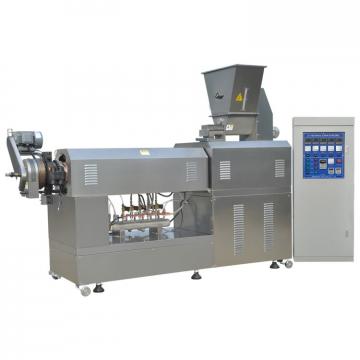 Factory Fruit and Vegetable Processing Machines/Quick Frozen Line/Food Processing Production Line for Daylily Production Line with High Output
Factory Fruit and Vegetable Processing Machines/Quick Frozen Line/Food Processing Production Line for Daylily Production Line with High Output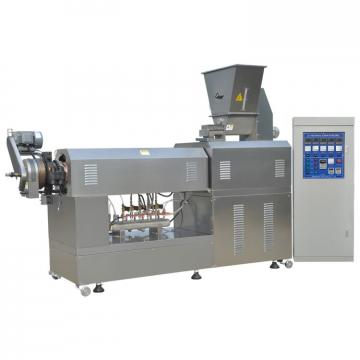 Factory Direct Sales PS Styrofoam Food Container Production Line
Factory Direct Sales PS Styrofoam Food Container Production Line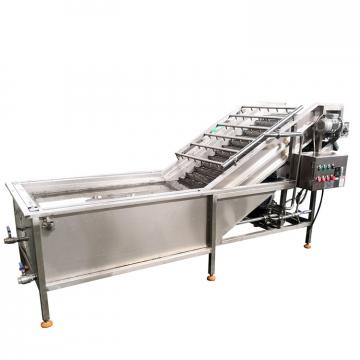 Complete Pure / Mineral Drinking Bottled Water Production Line Factory in Beverage / Food Area
Complete Pure / Mineral Drinking Bottled Water Production Line Factory in Beverage / Food Area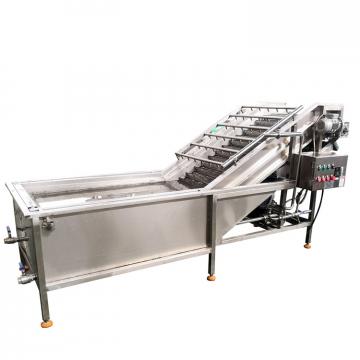 Cheetos Fried Food Production Factory Extruder Processing Line
Cheetos Fried Food Production Factory Extruder Processing Line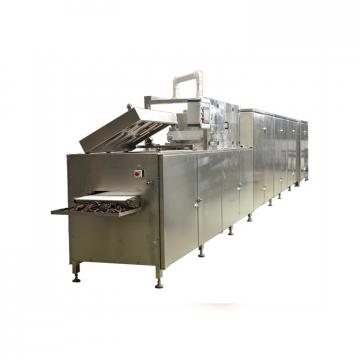 Automatic Mini Food Factory Macaroni Processing Line Pasta Production Line
Automatic Mini Food Factory Macaroni Processing Line Pasta Production Line
